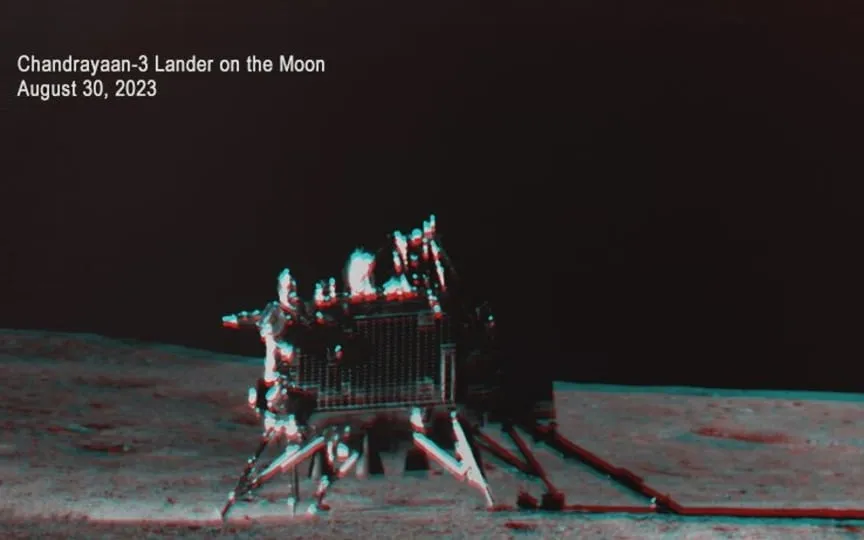ISRO Chief Hopeful for Vikram Lander’s Revival on Chandrayaan-3 Mission
Following the groundbreaking Moon landing achieved by the remarkable Chandrayaan-3 mission utilizing the Vikram lander, the Indian Space Research Organisation (ISRO) is embarking on an ambitious expedition of discovery with a range of forthcoming missions. These missions encompass revisiting Mars, Venus, and the Moon, as well as the highly anticipated inaugural human spaceflight program. Alongside these celestial pursuits, ISRO is also prioritizing missions aimed at investigating Earth’s climate and weather conditions.
ISRO Chairman S. Somanath shared his views on the Chandrayaan-3 mission and the Vikram Lander at a press conference in Chennai and gave an overview of ISRO’s vast programme. When asked about the condition of the Chandrayaan-3 mission’s Vikram lander, which landed on the moon on August 23, Somanath explained that the lander had performed its mission excellently during the lunar day. He said, “It is sleeping happily on the moon. It has done its job very well.” Then he said something that immediately caught everyone’s attention. PTI quoted him as saying, “Maybe if it wants to wake up, let it wake up. Till then we wait.”
We are now on WhatsApp. Click to join.
Multiple Missions of ISRO
The Gaganyaan programme, which aims to send Indian astronauts into space, is a major milestone. Somanath announced that the first TV-D1 test flight of this program is scheduled for October 21. “We have research missions. We have plans to go to Mars, Venus, someday again to the Moon,” Somanath said.
Apart from these celestial missions, ISRO is actively working on several scientific missions. These include the development of communication and remote sensing satellites. The Space Agency also focuses on critical scientific research, such as aeronomy, thermal imaging and assessing the effects of climate change.
Chairman Somanath said of Aditya-L1: “After that, the instruments will be switched on and it will start streaming scientific data. At the moment, everything is very well with Aditya-L1.” It is currently on a 110-day journey to reach the Lagrange point L1, located about 1.5 million kilometers from Earth. The goal of the mission is to observe the Sun from this unique perspective, providing valuable insights into solar activity and space weather. According to Somanath, the spacecraft is in excellent condition and is expected to reach its destination by mid-January.
Somanath emphasized the dual nature of ISRO’s work, as it combines pioneering research missions with more routine satellite launches and scientific endeavors.
One more thing! ReturnByte is now on WhatsApp channels! Follow us by clicking the link to never miss any updates from the world of technology. Click here to join now!




